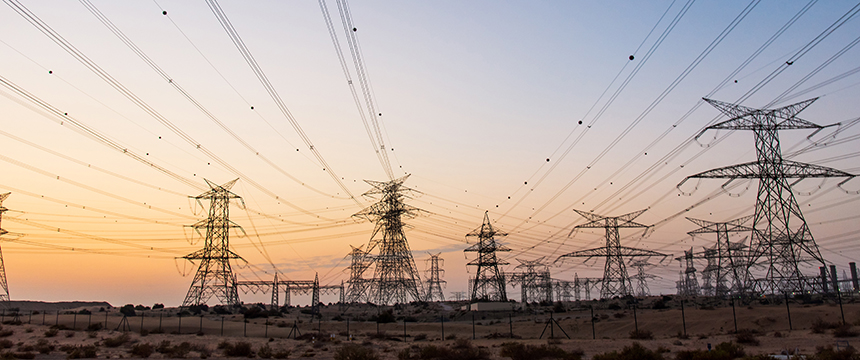Mexico: Balancing Remedies Regarding the Reformed Electricity Industry Law

I. Introduction
The Mexican President’s preferential Bill to Reform the Electricity Industry Law has passed both Houses of the Mexican Congress without changes and is now applicable law (the Reformed Electricity Law or the Law).
As we know, a major change introduced by the Reformed Electricity Law is the modification of the dispatch rules in Mexico’s National Electric System. The Law will favor power plants owned by the Federal Electricity Commission (CFE or Comisión Federal de Electricidad). The hydro-power plants will be dispatched firstly into the power grid, then the nuclear, geothermal, combined cycle and thermoelectric power plants, all of them owned by CFE. In third place, the solar and wind power stations owned by private entities and, at the end, the combined cycle power stations owned by private entities.
Although the self-supply and co-generation schemes are not expressly referred-to in these new dispatch rules, we understand that such power stations will be dispatched in third place if they are considered renewable or efficient co-generation and, if not, in fourth place.
Prior to the reform now in effect, the Electricity Industry Law provided that the dispatch of power plants in the National Electric System was based on safety and economic principles. The power stations to firstly feed the system were the Laguna Verde nuclear power plant, the self-supply and cogeneration schemes, renewables and the “Must Run” thermoelectric plants, then, when demand increases (just as the prices) the combined cycle power plants and, at the end, the thermoelectric power plants owned by CFE.
II. Potential Negative Effects of the Law
The priority established in the Reformed Electricity Law to CFE’s power plants to satisfy the demand will have as primary consequences (a) curtailment of electricity supply, and (b) increase in the electricity rates.
(a) Curtailment Issues
Renewable and conventional power stations will be facing curtailment issues due to the change in the dispatch order in which the Law mandates power generation to be fed to the power grid. It is still uncertain what will be the percentage that such power stations will be curtailed as a result of the Law’s modifications, but it will depend on the Node such power stations are interconnected-to, and the power generation capacity owned by CFE in the relevant Node.
As we know, curtailment can have a significant impact on a power generator’s economics. Both the Debt Service Coverage Ratio (the DSCR) and the revenue would be affected. At this moment, it is still uncertain the level of curtailment the power projects owned by private entities will face as a result of the change in the dispatch rules. Many of the Power Purchase Agreements executed as a result of the Power Auctions called by National Center for Energy Control (CENACE, or Centro Nacional de Control de Energía), or those executed between private entities do not properly regulate or mitigate the curtailment risks since such risk was not considered under the applicable dispatch rules. Therefore, this issue may considerably affect several projects´ economics.
(b) Increase in the Electricity Rates
Considering that, as per the Law, CFE´s power plants will be dispatched firstly to satisfy the demand, the natural consequence is the increase of the electricity cost. Such cost increase has to be reflected in the electricity rates charged by CFE. Below please find a chart indicating the unitary cost of the power stations owned by CFE, the Independent Power Producers (IPP) and by private entities under the auctions called by CENACE under the 2013 Energy Reform.
i. Unitary Cost of CFE’s Power Plants by technology for Basic Supply1
|
Technology |
Contracted Energy (MWh) |
Unitary Cost (Mexican pesos/MWh) |
|
Combined Cycle |
1,545,309 |
$1,813 |
|
Thermoelectric |
6,974,389 |
$1,401 |
|
Coal and Nuclear |
2,792,065 |
$1,122 |
|
Thermoelectric |
4,060,277 |
$1,479 |
|
Internal Combustion |
105,942 |
$2,645 |
|
Turbo gas |
16,106 |
$22,128 |
|
Hydropower |
1,891,569 |
$1,844 |
|
Intermittent |
21,440 |
$594 |
|
Wind |
20,601 |
$585 |
|
Solar |
839 |
$810 |
|
Geothermal |
400,568 |
$846 |
|
Total |
10,833,276 |
1,515 |
ii. Unitary Cost of IPP’s Power Plants by technology for Basic Supply
|
Technology |
Contracted Energy (MWh) |
Unitary Cost (Mexican pesos/MWh) |
|
Combined Cycle |
6,866,771 |
$765 |
|
Wind |
280,190 |
$1,401 |
|
Total |
7,146,967 |
$789 |
iii. Unitary Cost of Private Entities Power Stations from Public Auctions for Basic Supply
|
Technology |
Contracted Energy (MWh) |
Unitary Cost (Mexican pesos/MWh) |
|
Intermittent |
1,273,287 |
$383 |
|
Wind |
420,010 |
$400 |
|
Solar |
853,277 |
$375 |
|
Geothermal |
16,881 |
$476 |
|
Total |
1,290,168 |
$384 |
Source: https://datos.gob.mx/busca/dataset/memorias-de-calculo-de-tarifas-de-suministro-basico
As we can see, the average unitary cost of the energy coming from CFE -or IPP- owned plants is considerably higher than the energy produced by private generators that are sold to CFE under the power auctions called by CENACE. As a result of the changes made by the Reformed Electricity Law, the commercial and industrial electricity rates, as they would correspond to CFE´s, will increase considerably. It is still uncertain how much such rates will actually increase. For residential and small consumers´ electricity rates, we believe that their rate increase will be assumed by the Mexican government through subsidies.
III. Available Remedies under Mexican Law
(a) Amparo
One of the remedies available to private entities that will be affected by the Law, would be the Amparo trial, which is filed before Mexican Federal Courts, challenging its constitutionality. Under this option, affected parties may seek and are likely to obtain an injunction from Federal Courts to suspend the effects of the Reformed Electricity Law until the date the Amparo judgement is no longer appealable.
(b) International Arbitration
Another option for international investors is arbitration under the different bilateral or multilateral treaties that Mexico has executed.
For purposes of this document, we will only focus on North American Free Trade Agreement´s (NAFTA´s) successor, the United States-Mexico-Canada Agreement (USMCA). Several other treaties also foresee arbitration procedures that are relevant as well, and which we would gladly discuss at your convenience.
Considering that USMCA´s investment chapter restricts access to international arbitration to certain US investors in Mexico (subject to the 3-years exception below), it is important to clarify what options do US and Canadian businesses have against the Bill.
i. NAFTA Investment Arbitration
According to USMCA´s Annex 14-C, US and Canadian investors are able to still file claims under NAFTA before July 1, 2023, provided that the dispute is related to an investment that was made when NAFTA was still in force and remained in existence on July 1, 2020.
ii. USMCA Investment Arbitration
For investments made under USMCA (i.e. beginning as of July 1, 2020), and pursuant to its Annex 14-E, US investors that have executed Power Purchase Agreements with CENACE or CFE (a “Covered Government Contract”), or have investments in power generation (a “Covered Sector”), may submit to arbitration under USMCA´s Annex 14-D, including the ability to bring claims for violation of minimum standard of treatment or indirect expropriation.
Canadian Investors will have to go to national courts or investor-state arbitration under the Comprehensive and Progressive Agreement for Trans-Pacific Partnership (CPTPP).
Foley attorneys have the necessary experience in energy and administrative litigation matters to assist clients in challenging the Reformed Electricity Law and protecting their investments in Mexico.
1 Pursuant to the Electricity Industry Law, the concept “Basic Supply” – which was not modified – is the supply of electricity made by a basic service supplier under regulated tariffs. As of today, the only basic service supplier in the Mexican Power Market is CFE.


